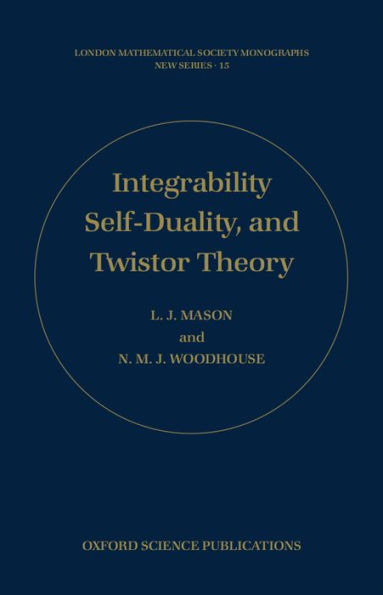5
1
9780198534983


Integrability, Self-Duality, and Twistor Theory available in Hardcover

Integrability, Self-Duality, and Twistor Theory
- ISBN-10:
- 0198534981
- ISBN-13:
- 9780198534983
- Pub. Date:
- 01/30/1997
- Publisher:
- Oxford University Press
- ISBN-10:
- 0198534981
- ISBN-13:
- 9780198534983
- Pub. Date:
- 01/30/1997
- Publisher:
- Oxford University Press
240.0
In Stock

Product Details
| ISBN-13: | 9780198534983 |
|---|---|
| Publisher: | Oxford University Press |
| Publication date: | 01/30/1997 |
| Series: | London Mathematical Society Monographs , #15 |
| Pages: | 376 |
| Product dimensions: | 9.21(w) x 6.14(h) x 0.88(d) |
About the Author
From the B&N Reads Blog
